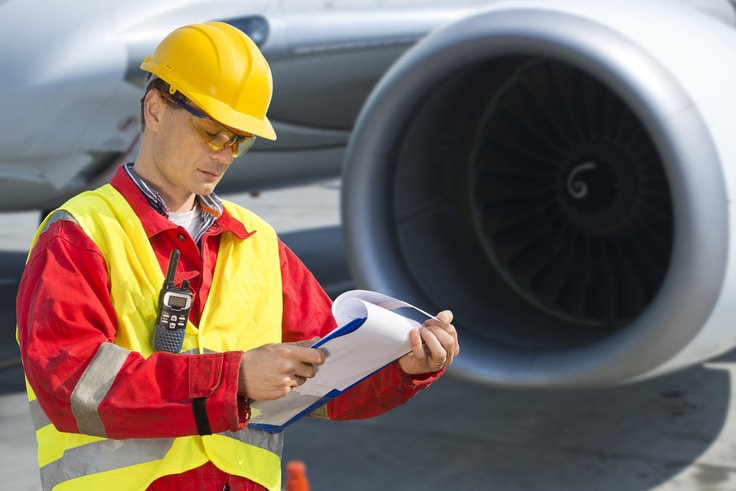
As South Carolina workers’ compensation attorneys, we work to assist people from across the state who have been injured on the job so badly they cannot return to work for a significant period of time, if at all. We also assist with the families of South Carolina workers who have been killed in workplace accidents, helping them obtain survivors’ benefits provided by the S.C. workers’ comp system.
We know from experience as well as from Bureau of Labor Statistics fatality reports for South Carolina that a worker of any age or occupation can go to work one morning and never go home again. It happened to 88 workers in South Carolina in 2017, which is more than seven times every month.
Recently, 24/7 Wall St. looked at data from the Bureau of Labor Statistics’ annual National Census of Fatal Occupational Injuries report to compile a list of the most dangerous jobs in the country based on 2017 figures, the latest available.
Do you or someone you love work in one of the most dangerous jobs in the country?
What Makes a Job Likely to Cause Injury or Death?
You may think you do not work in a dangerous job. But what BLS statistics show us is that any job can be dangerous. Some of the events that lead to fatal occupational injuries are everyday events. And, though the BLS report is about fatalities, you can be sure that for every fatal injury, there are many more who live with the results of injuries suffered in the same kinds of accidents.
The BLS says the “major events” causing 5,147 fatal workplace injuries in 2017 were:
- Transportation incidents (car and truck accidents)
- Falls, slips and trips
- Violence and other injuries by persons or animals
- Contact with objects and equipment (including caught in running equipment or “machinery deaths”)
- Exposure to harmful substances or environments
- Fires and explosions.
The BLS also notes that unintentional overdoses due to nonmedical use of drugs or alcohol while at work increased 25 percent from 217 in 2016 to 272 in 2017. This was the fifth consecutive year in which unintentional workplace overdose deaths have increased by at least 25 percent.
What are the Most Dangerous Jobs in America?
To determine the 25 most dangerous jobs in the U.S., 24/7 Wall St. says it reviewed fatal injury rates for 72 occupations from the Census of Fatal Occupational Injuries. Injury rates were calculated as the number of fatal occupational injuries per 100,000 full-time equivalent workers, where a full-time worker is equivalent to 2,000 hours worked by an employee during the calendar year. Data on nonfatal injuries are for the private sector only, and came from BLS Injuries, Illnesses, and Fatalities reports for 2017.
And according to their list, the top 10 most dangerous jobs in the United States are:
- Electrical Power-Line Installers and Repairers. Physically demanding work at heights and with exposure to high voltage.
Most common fatal accidents: Exposure to harmful substances or environments.
- First-Line Supervisors of Landscaping, Lawn Service and Groundskeeping Workers (Foremen). Use of powerful machinery designed to cut and sever, like chainsaws, lawnmowers, string trimmers, etc., and sometimes work at elevated heights, such as for tree trimming and pruning.
Most common fatal accidents: Contact with objects and equipment.
- Farmers, Ranchers and Other Agricultural Managers. Many fatal injuries result from incidents involving motorized vehicles, such as tractors, combines, trucks. Other farm machinery also poses safety liabilities. One of the few occupations in which there were more fatal injuries (59%) than nonfatal in 2017.
Most common fatal accidents: Transportation incidents.
- Driver/Sales Workers and Truck Drivers. Much of work time is spent on the road in both light and heavy trucks and may require lifting and moving heavy objects, which can cause injury.
Most common fatal accidents: Transportation incidents.
- Structural Iron and Steel Workers. Work at great heights to install and repair iron and steel on buildings, bridges, and roads. While just over 1% of total injuries suffered by structural iron and steel workers are fatal, the sheer number of injuries (14 fatal injuries, 1,280 nonfatal injuries) makes it one of the nation’s most dangerous jobs.
Most common fatal accidents: Falls, slips, trips.
- Refuse and Recyclable Material Collectors. Work is in a vehicle every day and frequently involves exposure to contaminants, such as pollutants, which can result in illness.
Most common fatal accidents: Transportation incidents.
- Roofers can slip, trip and fall from scaffolds, ladders or roofs and are at risk of heat-related illnesses from working in the sun during summer.
Most common fatal accidents: Falls, slips, trips.
- Aircraft Pilots and Flight Engineers. Injuries in any aircraft crash are likely to be fatal. Pilots’ work can be extremely demanding due to mental stress and demanding schedules.
Most common fatal accidents: Transportation incidents.
- Loggers / Logging Workers. Very physically demanding work with the risk of being struck by an object, such as a log or falling branch, or mishaps with dangerous machinery, such as harvesters and chainsaws.
Most common fatal accidents: Contact with objects and equipment.
What is the No. 1 Most Dangerous Job in America?
According to the analysis of BLS reports, fishers and related fishing workers had the highest rates of fatal injuries in 2017 with 100 fatal injuries per 100,000 workers. By contrast, the rate of fatal injuries among electrical power-line installers and repairers (No. 10) was 18.6 per 100,000 workers in 2017. Overall, there were 41 fatal injuries and 120 nonfatal injuries among fishers and related fishing workers reported in 2017.
Fishing industry occupations require largely physical work that involves fishing nets, gear and slippery decks, and exposure to challenging environmental factors, such as extreme weather. Further, fishers who are on boats on the water are isolated from emergency medical help in the event of a life-threatening injury. They are also subject to drowning from falling overboard or boats capsizing or sinking.
The most common fatal accidents among fishers were categorized as “transportation incidents,” but the report also says, “the majority of fatalities among fishers and related fishing workers are due to drowning.”
A Clemson University study for the South Carolina Department of Natural Resources says the state’s commercial fishing industry directly employs 720 people.
The BLS fatal occupational injuries in South Carolina report for 2017 shows no fatalities in “farming, fishing and forestry” occupations.
South Carolina Occupational Fatalities Span Variety of Work
The 2017 BLS report shows South Carolina worker fatalities in:
- Arts, design, entertainment, sports, and media occupations (1)
- Building and grounds cleaning and maintenance occupations (6)
- Construction and extraction occupations (21)
- Food preparation and serving related occupations (5)
- Healthcare support occupations (1)
- Installation, maintenance, and repair occupations (7)
- Management occupations (5)
- Military occupations (2)
- Production occupations (4)
- Protective service occupations (6)
- Sales and related occupations (6)
- Transportation and material moving occupations (21).






































